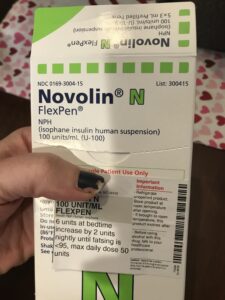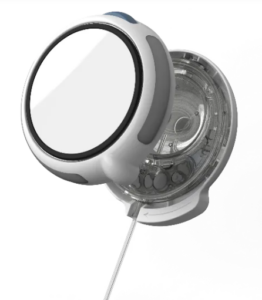Novo Nordisk says it is gradually phasing out human insulin pens globally by Maggie Fick for Reuters.com, 14 November 2024.
 Novo Nordisk is gradually ending production of human insulin pens, as it spends billions to ramp up manufacturing of its popular obesity and diabetes injections. The company declined to comment on the timeline. “Globally (human insulin pens) will be phased out over time and human insulin will be available only in vials,” a spokesperson said.
Novo Nordisk is gradually ending production of human insulin pens, as it spends billions to ramp up manufacturing of its popular obesity and diabetes injections. The company declined to comment on the timeline. “Globally (human insulin pens) will be phased out over time and human insulin will be available only in vials,” a spokesperson said.Dean Kamen, insulin pump pioneer, wants to shake up diabetes tech by Elise Reuter for MedTehDive.com, 13 November 2024.
 Sequel Medtech is working to sell a new, more precise type of insulin pump that can measure the amount of insulin delivered to users. CEO Alan Lotvin, former president of pharmacy benefit manager CVS Caremark, started the company in 2023, along with Dean Kamen, president of Deka Research and Development, and three other co-founders.
Sequel Medtech is working to sell a new, more precise type of insulin pump that can measure the amount of insulin delivered to users. CEO Alan Lotvin, former president of pharmacy benefit manager CVS Caremark, started the company in 2023, along with Dean Kamen, president of Deka Research and Development, and three other co-founders.
Kamen created one of the first portable insulin pumps in the ’70s and is also known for another invention — the Segway. Deka developed the new insulin pump, called Twiist, and received Food and Drug Administration clearance in March for the device to be used by people with Type 1 diabetes. Sequel will market the device.
Kamen said Twiist differs from other insulin pumps because it has no syringes, no gears, and no motors. Most current pumps use a tiny motor that rotates, causing a plunger to push insulin into the tubing. “Our little Twiist is a device that can monitor and control the flow of the fluid, but it has nothing in its technology that looks anything like a pump,” Kamen said. It also has a feature to measure the amount of insulin actually delivered. Because of this, the device also has advantages in detecting air or blockages that can affect the amount of insulin delivered, Lotvin said. Lotvin said Sequel is working on CGM partnerships and plans to launch Twiist after working through final details such as quality and customer service. He didn’t share an exact date for a launch.
Sequel is working with Tidepool, a nonprofit making the first fully interoperable automated insulin delivery (AID) system. It’s designed so that people can pair sensors with insulin delivery devices of their choice. The Tidepool Loop app can predict a person’s blood sugar levels and ensure they receive the correct insulin dose. Tidepool Loop also has unique features, including the ability to control insulin delivery from an Apple Watch and the widest range of blood glucose targets.
Read more: Dean Kamen, insulin pump pioneer, wants to shake up diabetes tech
Putting the Foxes in Charge of the Henhouse: The Dramatic Race to Develop an Artificial Pancreas from Breakthrough T1D, 13 November 2024.
 Here is the history of artificial pancreas development as a possibility, by Douglas Lowenstein, November 2024. “I realized that while others have written about it, the definitive history of this remarkable journey had yet to be written. In the pages that follow, I try to fill that void.
Here is the history of artificial pancreas development as a possibility, by Douglas Lowenstein, November 2024. “I realized that while others have written about it, the definitive history of this remarkable journey had yet to be written. In the pages that follow, I try to fill that void.
While this story focuses on a handful of people who played central roles in securing approval of AP systems, space does not allow me to highlight the instrumental contributions of hundreds of passionate scientists, Breakthrough T1D volunteers, clinical trial participants, industry executives and researchers, regulators, lawmakers, and government scientific agencies. While they may not receive the explicit recognition they deserve, what follows is their story as much as those featured. They all helped make history and helped people like my daughter live safer and healthier lives. Our family owes them a debt of gratitude we can never repay.
This story is based on more than 30 one-on-one interviews lasting more than 40 hours, and a review of hundreds of pages of peer-reviewed articles in scientific journals. I am responsible for the content of this story in its entirety. I hope you enjoy reading it.”
Since the approval of the 670G, FDA has approved four additional systems, including the T:Slim X2 by Tandem, using the original algorithm developed by Boris Kovatchev, the Omnipod 5 by Insulet, using the algorithm developed years earlier by Frank Doyle’s team at UCSB, and Tandem’s Mobi, the Cam APS developed by Dr. Roman Hovorka’s team at the University of Cambridge in England, the iLet Bionic Pancreas that emerged from Ed Damiano’s team at BU, and most recently, the Dean Kamen designed twiist from Sequel Med Tech. Thousands of others continue to use DIY systems.
Read more: Putting the Foxes in Charge of the Henhouse: The Dramatic Race to Develop an Artificial Pancreas


I really enjoyed the AID history article.
I do not know if I will live to see an artificial pancreas. But it has been a long-held dream to have one. I hope I do lie to see it and that I might qualify for any model. I understand I likely will not, but I want it said I am part of the Vanguard of this new technology. How exciting is this?
You know, I think the pump is about where it needs to be. Regarding technology, Pumps work. Do we really need more precision? I think not. Instead, open the pump world to interoperability with sensors. I see Med T with feelers in the third-party sensor market. That is a good thing, but we need to open it to the 365-day sensor, and until that is done, our sensors remain the one place that pump tech needs to address. Not more precise dosing. But what do I know? I am just a user.